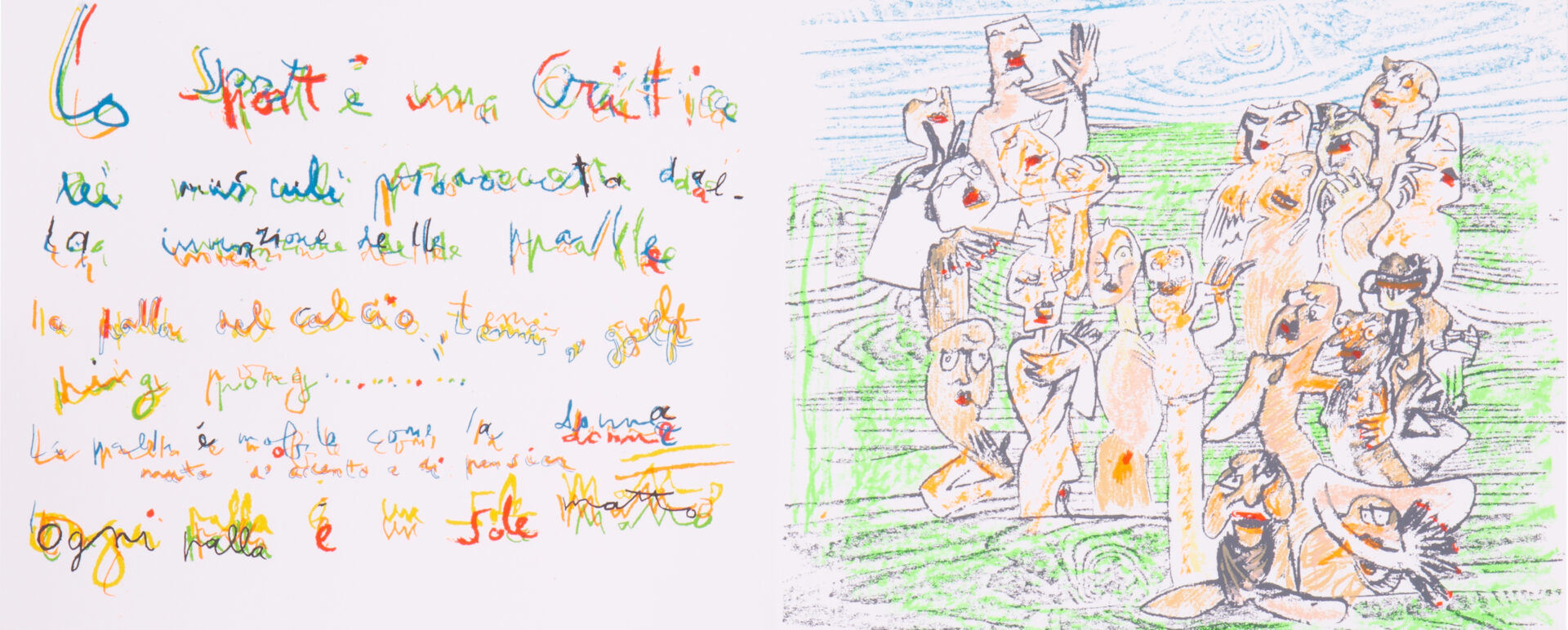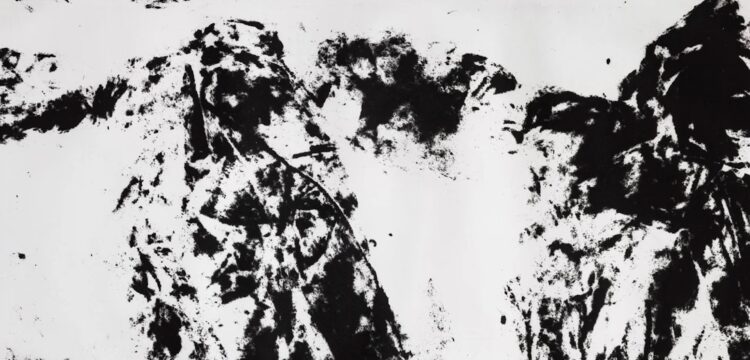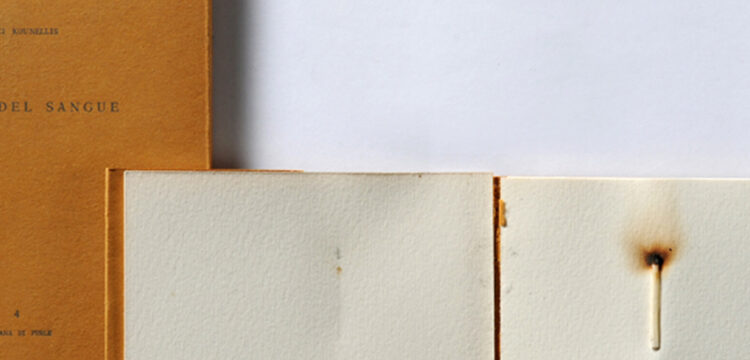Serial Productions
Archive Actualized #Multipli: a conversation with Litografia R. Bulla, Magazzeno Arte Contemporanea, and Paradisoterrestre
This is the second of three coral interviews dedicated to galleries, specialized bookshops, and bibliographical offices as part of Archive Actualized #Multipli, a special issue in Replica’s series exploring the new MULTIPLE section of Arte Fiera, and its engaged gaze at multiplied art as a political, democratic, and utopian practice within the art system.
As we gradually became aware of the utopian character of these aspirations, the will to research slowly faded away. The only possible output turned out to be the ever criticized art market, that transformed contents and works to its own use and consumption.
Manfredo Massironi, Situazioni dell’arte contemporanea. Testi delle conferenze tenute alla Galleria Nazionale d’Arte Moderna di Roma, 1976
REPLICA: As you know, since we started working on the MULTIPLE section, a groundswell of discussion has opened up about this category, drawing a big question mark over what it means, and what it does or does not include.
Before the 1960s, the term “multiples” mostly referred to objects such as engravings, lithographs, etc. After that date, “multiplied art” refers to those works that originated from kinetic art research that combined art, industrial design, and technology, and that laid the foundations for an art made for everyone, with the aim of opening up a real process of democratization. What is your point of view?
Litografia R. Bulla: For us, the multiple represents the artist’s quest to question and confront the rule (technique). Although within strict boundaries, the technique is open, ready to be discovered, respected, and—why not—stressed, to remain open “to the game”. It is a propaedeutic and bilateral “game” in which the artist and the printer participate, confronting each other in a dialectic exchange between rules and exceptions. An encounter between different visions aimed at a result. The construction of a multiple in its most varied technical declinations is a moment of great research and shared enthusiasm. For us, it is an important moment when an artist who has worked in our print shop sees the realization of a multiple as the opportunity to open up to new perspectives. When this happens, it is always exciting. The multiple, precisely because of its plurality, has a democratic character, and we see, with a hint of romanticism, the artist’s thinking reconfirmed specimen after specimen.
Paradisoterrestre: Our first participation at Arte Fiera in this new MULTIPLI section has somehow influenced the program of the gallery, where we will present a group show entirely dedicated to limited edition works of art and design objects. Perhaps this is the definition of multiple for us: in between unique piece and mass production. It is interesting to note that in your perspective kinetic art is considered almost a kind of “watershed” in the very definition of art multiples: in our group show LIMITED there will be exhibit multiples of kinetic and programmed art by Alberto Biasi, Angel Duarte, Edoardo Landi, united by the fact that they were made in the Duchamp Centre. It was an adventure conceived by Dino Gavina and officially inaugurated in San Lazzaro di Savena with the active participation of Man Ray in 1969, ready to welcome and promote the work of artists and researchers of various disciplines, to identify new forms of production and communication of culture and arts. Our view of the definition of “multiple” is influenced by the field of action in which we operate, a hybrid space between art and design where our productions in collaboration with artists and designers are never “unique” but very often “limited edition”. At the same time it is nourished by experiences that involve the figure of our historic founder Dino Gavina and that are part of our cultural and material heritage, such as the one mentioned above of the Duchamp Centre, and the production of multiples of kinetic art, or even the adventure of the Ultramobile operation, which was disorienting and revolutionary because it was conceived in 1971 “to make a poetic presence enter our homes more easily […]. Each Ultramobile model is a work of art, a multiple of unlimited number that is sold with the same mark up of a piece of furniture, and has a limited cost, while having artistic value” (Ultramobile catalogue).
Magazzeno Arte Contemporanea: I love the artistic and commercial revolution that started in the 1960s in America and then developed in Europe as well: bringing art back down to earth, giving it a humane and no longer divine connotation, from untouchable to “touchable” and indeed purchasable, exchangeable, and collectable. When Keith Haring opened the first Pop Shop, he made everyone realize that art could be desecrated to the point of ending up on a t-shirt, and this gave rise to a multiplication of art objects, and gave artists the freedom to sell as much or as little as they wanted. A revolution that also led to exaggerated commercial speculation—ça va sans dire —but this was inevitable. As far as our research is concerned, we not only exhibit and sell multiples, but, in some cases, we produce them in close collaboration with artists, usually for a specific project. With this operation, we succeed in approaching a younger audience with a different purchasing power, but with a desire to start collecting art.
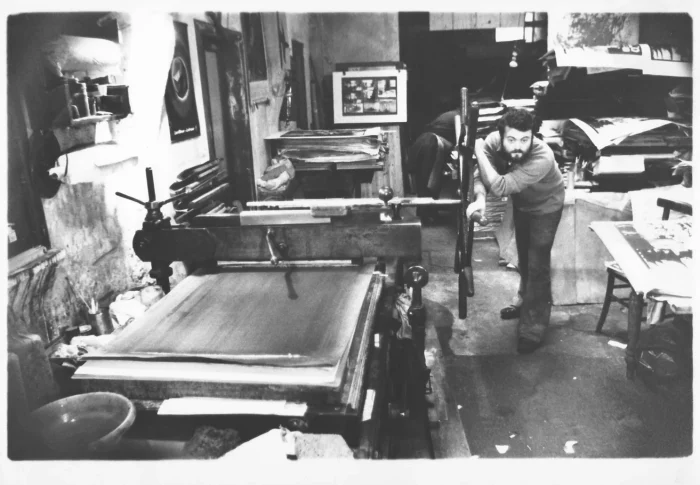
Unlike the publishing section of a fair, where publishers propose a heterogeneous selection of works, for the MULTIPLE section you were invited to realize an ad hoc project, more akin to the realization of a small exhibition. Could you tell us what you have imagined for this new Arte Fiera section? What aspects of your research as booksellers would you like to show to the public?
Bulla: We thought of several lines of interpretation for our presentation in the context of Arte Fiera. First of all, we would like to show the experimentation and the intertwining of printing techniques and other arts. It would be nice to make visible the fun that artists and printmakers have when they confront the various techniques in the studio as they search for the key to combine them. We are speaking, for example, about Enzo Cucchi’s Eroè edition, which began almost as a playful challenge: Cucchi found, with no small effort, a way to “lock” the color onto terracotta bricks by drawing on old family recipe books. Then there are the editions by Carla Accardi, Giosetta Fioroni, Aldo Mondino, and Giacinto Cerone, where the lithographic gesture welcomes and is welcomed by the embrace of ceramics. Finally, Gianni Politi’s edition, where giclée, woodcut, and the artist’s gesture are combined.
We chose to follow the red thread that links the sixth generation to the seventh, the current one, namely experimentation, a taste for art publishing, playing with artists: to seek a different key with the most contemporary visions and materials while remaining firmly rooted in traditional technique.
Paradisoterrestre: For our first participation in Arte Fiera, we wanted to present a monographic booth entirely dedicated to the surrealist artist Roberto Matta. Since 2019, the year in which we started collaborating with his daughter Alisée Matta, some iconic pieces that the artist made for Dino Gavina, the historical founder of our gallery, have become part of our catalogue. These include the chairs/sculptures Margarita and Sacco Alato, designed in 1971, which we propose in a limited edition of 25 pieces. Hence the idea of participating in the MULTIPLI section, thus building our MultiMatta project. In addition to these two “functional works of art” that are part of our editions, two other armchairs from our Historical Design Selection will be on display. Thanks to the collaboration with the Matta archive, we have been able to further enrich our presentation at the fair with six folders and a selection of ceramics made by Roberto Matta in the Bottega Gatti in Faenza in the 1990s. Our choice stems from the desire to show the public our specificity: a mixture of design and art that characterizes our research. It is also an opportunity to celebrate once again a very important figure such as Roberto Matta, an international renown artist but at the same time a figure linked to Bologna.
Magazzeno: Every time we participate in a fair, we try to propose a curatorial project before a commercial one: for us, the public must understand what we do and why we do it that way. I have always been attracted to the way of thinking of gallery owners like Leo Castelli and Ileana Sonnabend, who considered selling the work to be exclusively functional to the work process of the artist and the gallery. I do not come from a family of art dealers, but from an academic curatorial background, and having studied with Francesco Bonami, and other irreverent curators, I understand the gallery as a place to do research, a living and inclusive, even provocative, space. For Arte Fiera, being the most historic of Italian fairs, we thought of an equally important artist, a pillar of the last century, still extremely contemporary today more than ever. Joseph Beuys was the first in Europe to understand the importance of the multiple, creating a very extensive variety, from signed postcards to posters, photographs, and objects like wine and oil bottles. But since the gallery works purely with contemporary artists, we decided to place alongside the German master three artists with whom we collaborate and who, for some time now, have focused their research on themes similar to those pursued by Beuys. Thus, alongside the legendary multiples of the shaman artist par excellence, such as the F.I.U. wine bottles, the offset prints of Difesa della Natura, the poster of La rivoluzione siamo noi, and the photos of the 7000 Querce, three different multiples will be produced for the occasion by the artists Matteo Lucca, Chiara Lecca and Giorgia Severi, who will work on the relationship between human and nature, mixing sculpture, printmaking, and photography.
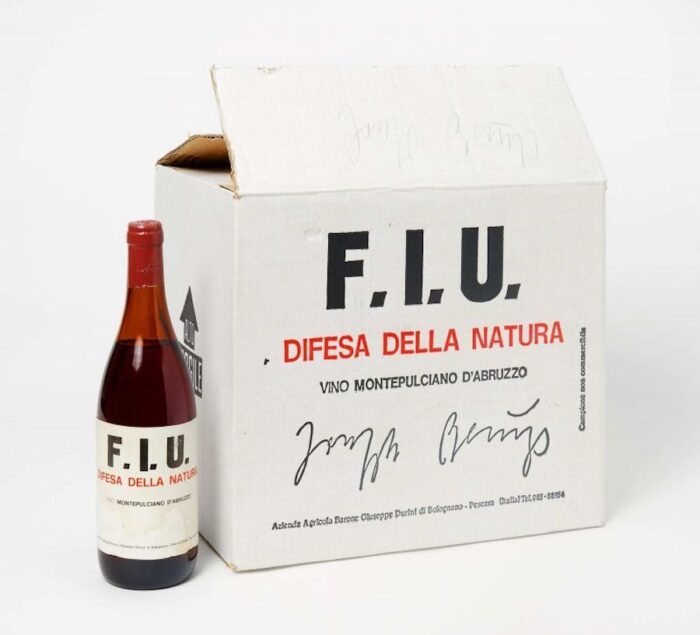
Among your proposals, what do you think is the multiple that should not be missing in a collection? What do you think is the most coveted object of desire?
Bulla: No one could be worthier than another. The editions are unique and visionary expressions of a self—and here we immediately return to the concept of uniqueness. This is what makes each of these editions like a little big world, made of visions, needs, and techniques worthy of being individually explored.
Paradisoterrestre: It is very difficult to choose, especially since we are talking about a production that ranges from folders to ceramics to limited edition design pieces. Having to do so, our choice would fall on the latter, because they are the core of our work, and what differentiates us from all the other galleries at the fair; in particular, Margarita and Sacco Alato, which are part of our catalogue, and which you will see at Arte Fiera in the historical bronze version, while in the gallery they are exhibited in the aluminum version for the group show LIMITED, organized in the context of ART CITY Bologna 2023. Margarita was an open container, like a daisy, a stem transformed into a tribal throne. Sacco Alato was born in the foundry while Margarita was being made: a sandbag cast and split in two, a seat/sculpture with large stones found in the street as feet. Almost 50 years after the first prototypes and the very few examples produced by Simon International, these re-editions were possible thanks to the collaboration with Alisée Matta. Margarita and Sacco Alato are in a limited edition of 25 pieces, engraved with the artist’s identification of number and signature. Each work is accompanied by a certificate of authenticity.
Magazzeno: I believe that Joseph Beuys’ wine carton and oil bottle are two incredible pieces that symbolically encapsulate all the research that Beuys carried out in his life, and especially in the last 15 years in our country. A testimony of his passage through our land in some objects of our culture and everyday life. Even the poster of the first exhibition he did in Italy, at Lucio Amelio’s, La rivoluzione siamo noi, in which he appears in all his power and iconicity, is an enviable piece: in addition to being very rare, it is also the image that everyone thinks of when talking about Beuys, and the one we find in any art history book.
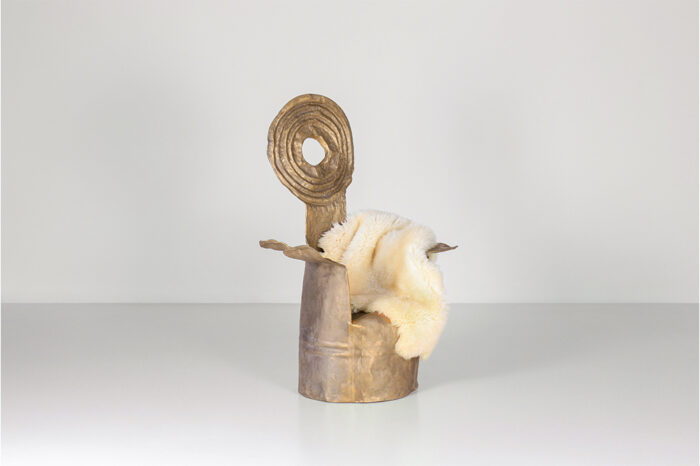
Litografia Bulla is a lithographic workshop based in Rome but is also an historical reference point in the city. After collaborating with today’s established artists, you started working with young Italian artists. What does it mean to carry on a family heritage and give new generations access to a traditional and ancient technique?
Bulla: For us daughters (Flaminia and Beatrice), it means acting driven by spontaneity and in a family relationship with artists. Our father Romolo and our aunt Rosalba gave us what we consider to be a great lesson: to grow up with the artists of our generation and to have fun with them, travelling a piece of the road together. For us, it is indeed a great happiness––and an honour––to be able to work hand in hand with artists and take care of the workshop and the family tradition that has lasted more than 200 years. The stones and lithography presses that we use today are the same ones that our ancestors in Paris used in the early 19th century, a good seven generations ago. This for us is an incitement to dream.
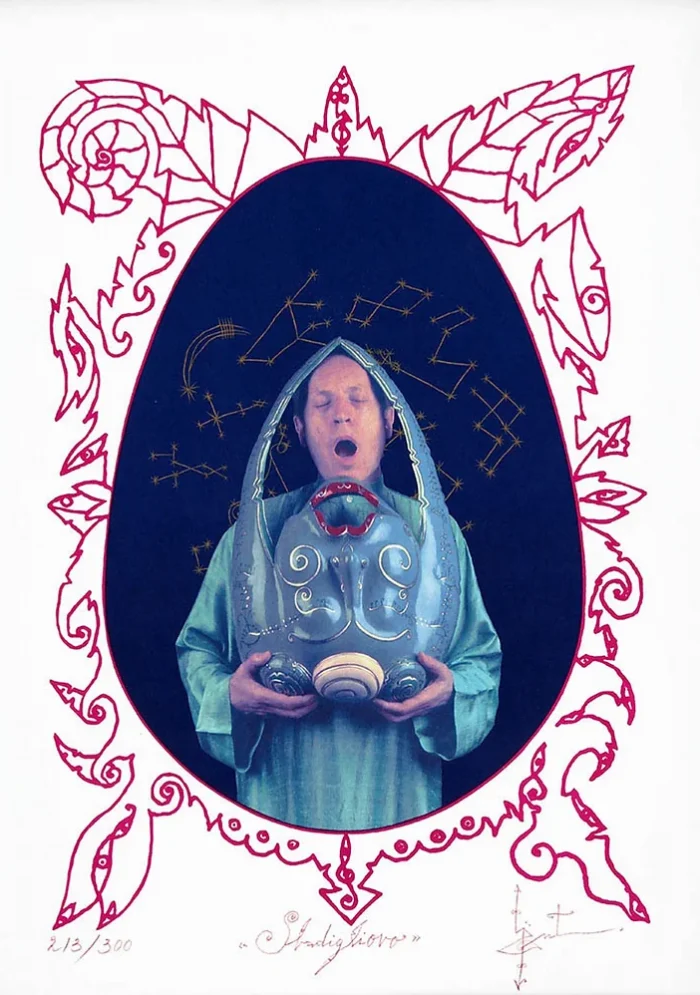
Magazzeno presents at Arte Fiera a project dedicated to Joseph Beuys in dialogue with some young artists. How are these individual dialogues structured during the days of the fair?
Magazzeno: Almost the entire exhibition will be dedicated to Beuys, with “incursions” by the three invited artists. We wanted to invite just three of them so that each day of the fair will be dedicated to the presentation of the multiple of one of them. The presentations will be moments during the day when we talk with the artist, who will tell us about the creative process and the realization of the work in question.
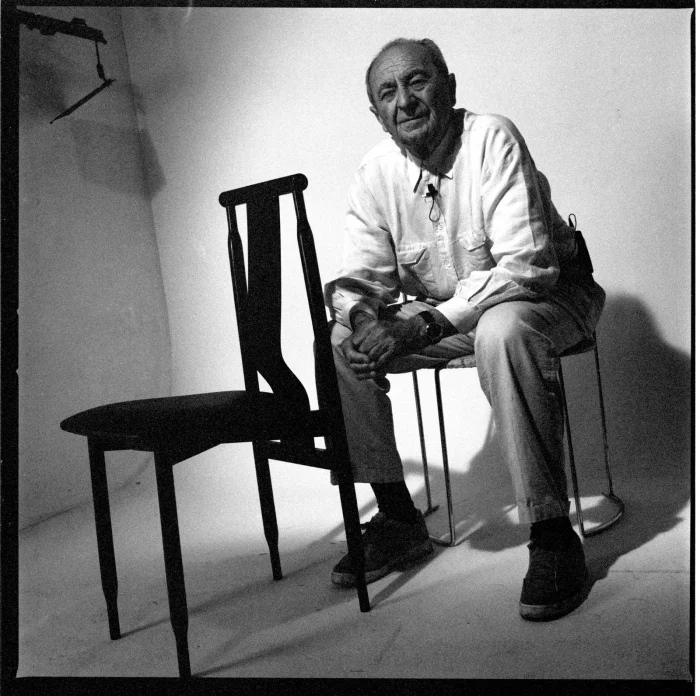
Paradisoterrestre represents in the MULTIPLI section a hybrid reality that leans towards “pure” art as well as design. The project presented at the fair is almost like a tribute to Roberto Matta, a figure on whom you realized an important exhibition in the gallery in close collaboration with the archive. What does it mean for you to work with figures with such a wide range of projects, and how do you restore their legacy?
Paradisoterrestre: Since we relaunched Paradisoterrestre in 2017, among our priorities has always been the need to make ourselves spokesmen for the cultural legacy of Dino Gavina, based mainly on his personal and professional relationships with the most prestigious figures in the world of art and architecture of his time, including Carlo Scarpa, Achille and Pier Giacomo Castiglioni, Ignazio Gardella, Kazuhide Takahama, Marcel Breuer, Man Ray, Marcel Duchamp, Lucio Fontana, Roberto Matta, Tobia Scarpa, Luigi Caccia Dominioni, Enzo Mari etc. Part of our work is precisely to reactivate the confrontation with these great figures—in some cases indirectly, as with Roberto Matta; in others directly, as with the architect Tobia Scarpa. Whether it is through the re-edition of pieces that have made design history or through the creation of brand-new projects, for us it is an honor but, above all, a mission to continue keep the focus on points that we believe we share with our designers/artists: a dialogue between art and design, excellence in construction quality, craft tradition applied on an industrial scale, linguistic and aesthetic experimentation.
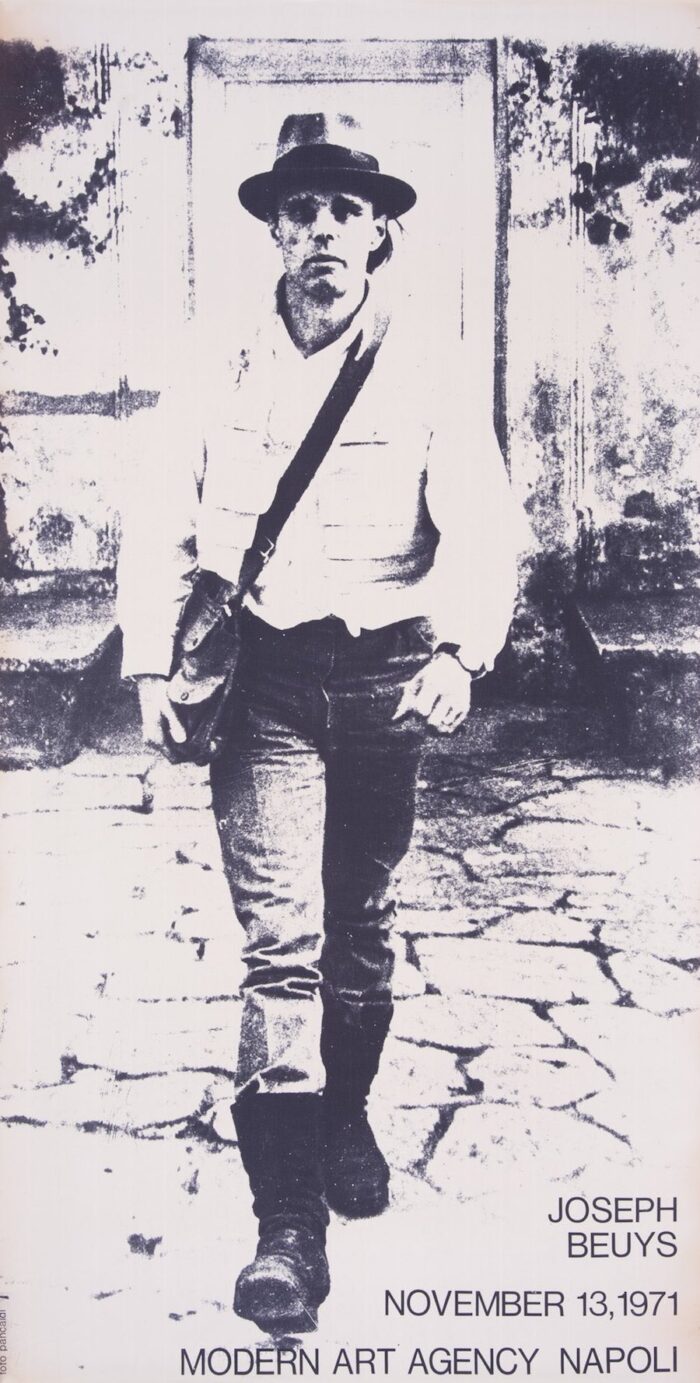
One of the reasons that prompted Simone Menegoi, Artistic Director of Arte Fiera, to inaugurate this new section is to make the fair a more inclusive moment. As exhibitors, what is your point of view with respect to this stance in a context mainly connected to the art market?
Bulla: We happily accepted to participate, driven by the idea that it would be a good experience and a useful moment to make the world of graphic art and its great breadth known.
Paradisoterrestre: It is certainly not an easy task to combine inclusivity—an unavoidable theme today and one that is so transversal—with a market that is in itself so exclusive as the art market. This is a challenge that, if won, will be a win-win for everyone, so we hope that this section and this edition of Arte Fiera will be a success.
Magazzeno: There is a large market linked to multiples, and they are certainly useful today to bring new audiences closer to this world. Inclusivity in the art world is a necessity that cannot be ignored today. I firmly believe that the idea of contemporary art as something snobbish and incomprehensible is no longer fashionable, or in drastic decline: what interests me, as a gallery owner and curator, is that people do not feel judged by the works, the artists, or us gallery owners. This does not mean a lack of complexity, but rather a reluctance to the formal snobbery of certain past art and certain exclusive and conservative circles. The multiple was created precisely to make art more inclusive and closer to the people, both formally and aesthetically, and economically. I, therefore, consider it an excellent step for the Bologna fair and hope that this section will be appreciated by an audience as diverse as possible.

